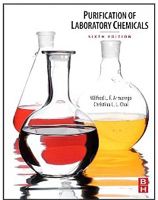
Purification of Laboratory Chemicals is one of many books and pamphlets you'll find at Safety Emporium.
Before we can talk about sublimators we should differentiate between two terms that are often used interchangeably:
- Sublimate: To transform directly from the solid to the gaseous state or from the gaseous to the solid state without becoming a liquid.
- Sublime: To cause to sublimate.
In other words, a compound may
sublimate or undergo
sublimation. You can
sublime the compound. You do not sublimate the compound and the compound does not sublime.
In actual practice even experienced professionals will use these words interchangeably, but it is a good idea to be aware of these semantic differences.
A basic sublimation apparatus (also called a sublimer or sublimator) has a section where the compound to be sublimed is placed and a cooler section above this where the purified material will collect. Typically, the compound is heated and collected on a chilled piece called a cold finger. Usually, but not always, the sublimation is performed under reduced pressure. Several different examples of common sublimators are shown below.
Click on any sublimer below for more information or to order
The sublimation adapter shown above is designed to be placed into a flask. This design is cheaper, but it is often difficult to get the cold finger out of a narrow joint without contaminating or losing the sublimated material.
Bigger and fancier sublimators also exist. However, some compounds (such as ferrocene) can be sublimed simply by placing them in a Petri dish and then heating the dish on a hot plate.


 The Glassware Gallery
The Glassware Gallery
![]()